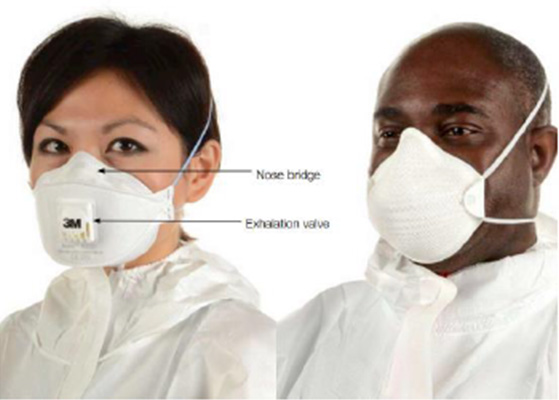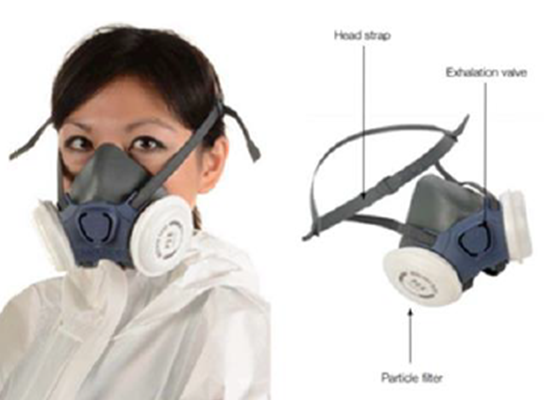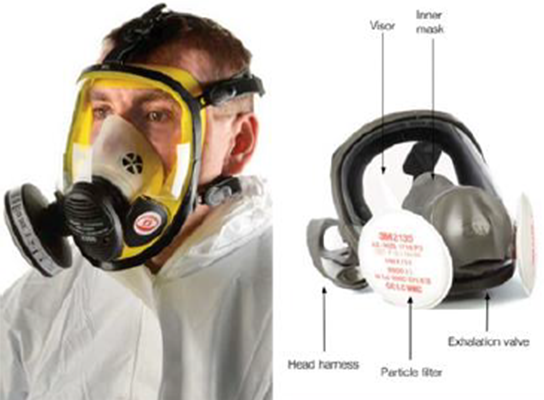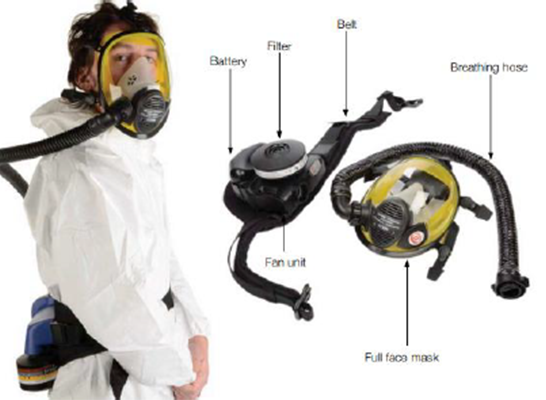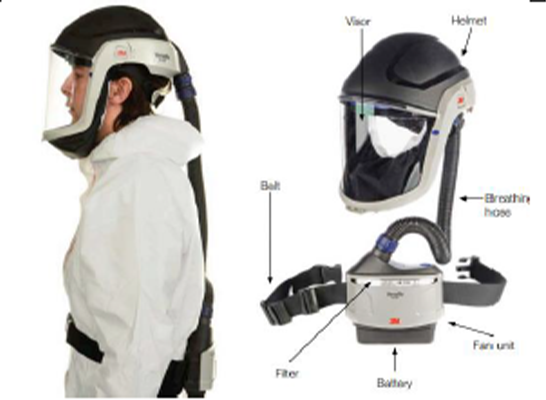Both droplets and aerosols contain virus particles which could transmit infection to health and care workers if they are not adequately protected. Whilst droplets can be larger and may fall quickly in the vicinity of the infected person, smaller droplets or aerosols may ‘hang around’ in the air and travel longer distances meaning it is possible to become infected from a greater distance, especially in indoor settings including health and care settings, prisons, policy custody suites etc. The above illustration shows how aerosols are produce outside of traditional aerosol generating procedures. This will apply to home or workplaces as well as health and care settings.
The ability of droplets and aerosols to travel through the air is colloquially referred to as the ‘airborne’ route of infection.
Fluid resistant (FRSMs) or surgical face masks are designed to provide a physical barrier only to splashes and droplets and will cover the wearer’s nose, mouth and respiratory tract. In principle, surgical masks that are worn correctly should provide adequate protection against large droplets, splashes and contact transmission. They may also slightly reduce risks associated with infectious aerosols, although this level of protection might not be sufficient to reduce the risk of transmission in the following example situations:
- when in close contact (within 2m) with people suspected or known to have COVID-19. Note risks are increased when in close proximity to the patient’s head/face for procedures such as mouth care, swallowing assessment, insertion of naso-gastric tube, chest percussion)
- where ventilation is unable to adequately remove the risk of infectious aerosols
- where staff are exposed to people suspected or known to have COVID-19 for extended periods of time or for shorter but more frequent periods such as in accident or emergency or ‘out of hours’ clinics.
It is for this reason, that FRSM’s should not be used in situations where close exposure (less than 2m) to where infectious aerosols are likely (HSE 2008).

Figure 1 - Range of respiratory particles and potential spread over distance. Blue particles represent droplets, typically >100-μm diameter, that fall to the floor under gravity within 2 m of the source. Red particles represent aerosols, typically <100 μm, that stay suspended for longer, but eventually fall to the ground if the air is motionless for long enough (at least 30 min).
Source: Tang et al (2021)
A filtering face piece masks (FFP) provides a higher level of protection from FRSMs. In addition to providing a physical barrier they also provide protection against infectious aerosols. In the UK these are provided generally as FFP3 masks. FFP2/N95 mask s are provided in many other parts of the work as an alternative.
Currently IPC guidance advises on the use of different types of masks including fluid resistant surgical face masks (FRSMs) and FFP3 respiratory masks in specific situations. The selection of the right type of mask confined to pre-determined circumstances can be confusing to health and care professionals and ultimately is dependent on the risks of infection present.
This information chart is designed to support you to select the right type of mask and respiratory PPE depending on your role and the health and care activity being undertaken considering risks of infection that may be present in your work setting/situation.
It is for this reason, that FRSM’s should not be used in situations where close exposure (less than 2m) to where infectious aerosols are likely (HSE 2008).
A filtering face piece masks (FFP) provides a higher level of protection from FRSMs. In addition to providing a physical barrier they also provide protection against infectious aerosols. In the UK these are provided generally as FFP3 masks. FFP2/N95 mask s are provided in many other parts of the work as an alternative.
Currently IPC guidance advises on the use of different types of masks including fluid resistant surgical face masks (FRSMs) and FFP3 respiratory masks in specific situations. The selection of the right type of mask confined to pre-determined circumstances can be confusing to health and care professionals and ultimately is dependent on the risks of infection present.
This information chart is designed to support you to select the right type of mask and respiratory PPE depending on your role and the health and care activity being undertaken considering risks of infection that may be present in your work setting/situation.


